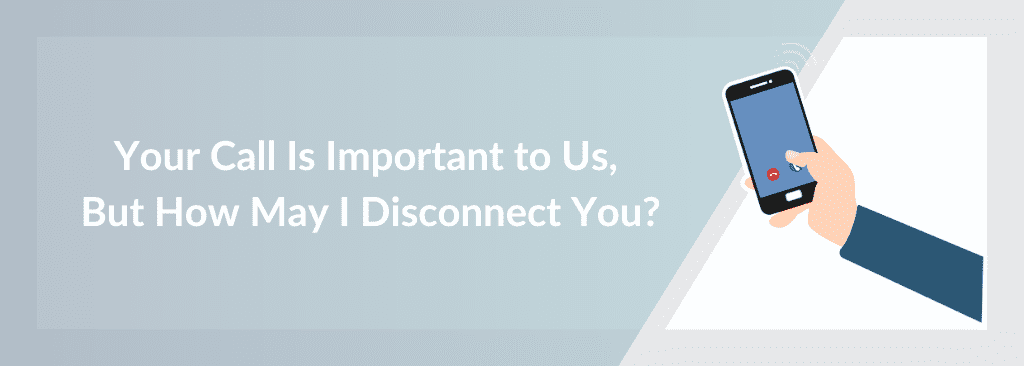Your Call Is Important to Us, But How May I Disconnect You?
I remember reading this piece on Dilbert many years ago, where the receptionist asks the caller, how may I disconnect you?
To which the caller responds, what options do I have?
The options given were:
- You would be put on hold endlessly till you disconnect
- You will be transferred from one extension to another till you disconnect
- We would play lobby music till you disconnect
There were a couple more options that I don’t remember.
The caller responds I would go with option C.
You get the drift right.
Metaphorically, most call centers function this way even today.
- The last time I tried reaching my mobile service provider, it took me 18 minutes to speak to an agent.
- The last time I tried reaching my bank, it took me 12 minutes to talk to an agent.
- The last time I tried contacting my airline service provider, it took me 35 minutes to register my request.
This is my experience of trying to reach agents at seemingly large companies focusing on customer experience.
What Ails the Call Centers?
After all, their purpose is to help customers get through their problems.
I was wondering what is an acceptable wait time for call center customers.
Brits Wait an Average of 12 Minutes.
I was reading an article about a survey conducted by Infobip on the average wait times in Britain.
Apparently, Brits wait an average of 12 minutes before being connected to a contact center agent. When they finally speak to an agent, 9 out of 10 say their complaints are unresolved.
In essence, call centers worldwide have issues in addressing customer requests.
What Is the Ideal Scenario for Call Centers?
It is the 80/20 rule, where as a call center, you are expected to attend 80% of your calls within 20 seconds.
Apparently, only 16% of the call centers can comply with this requirement, and the rest fall short of it.
What could be the reasons?
The possible reasons could be:
- The call centers are short-staffed.
- The only means of customer communication is the voice channel, and no other self-service channel.
- Issues with the product or the service offering that is sold to the customers, resulting in high call volumes
- Agents are not supported with the right technology and infrastructure, and it takes them longer to address or resolve customer queries. They don’t have access to customer interactions, knowledge bases, or FAQs on their interface, forcing them to open multiple screens to do their jobs.
How Do You Resolve This Challenge?
It is by implementing the right technology that would allow you to provide the best possible customer experience.
A few things for you to consider include:
Omnichannel Interactions
Most organizations use different systems to manage the customer journey. Data resides in silos, and they are the greatest challenge facing contact centers today. Data becomes siloed as the customer view is carved up between these systems.
This means your customer-facing reps must access multiple screens and numerous applications to resolve customer requests.
You must integrate all of your systems with your contact center platform to provide a single view of your customers to the customer service reps. This will allow them to provide the best possible customer experience.
Besides, you need to integrate all of the channels on which you are available – voice, SMS, IVR, chat, messenger, email, mobile, and social. The customers will not have to repeat themselves, irrespective of the channels they choose to interact with you.
Voice Analytics
Only 2% of the recorded calls are viewed by supervisors and managers, and the remaining 98% lie in their storage servers.
There is a ton of insight that is available in these voice messages. Once you run analytics on them, you can identify the commonly reported challenges and issues. You can convert the commonly reported transactional queries into a knowledge base or FAQs that customers can access.
This would reduce the number of calls that your agents receive considerably.
Workforce Management
This will allow you to direct the queries to the right agents with the right skills at the right location at any given time.
It doesn’t matter which channel the question comes through – you’d be directed to the right agent with the necessary skills to address your need.
It would address scheduling, forecasting, and adherence and ensure that the call center is staffed right based on the call volumes, the nature of queries, and the average handling time for each call.
Workforce management takes into account these inputs:
- Determine historic contact volumes and patterns
- Predict how many contacts will be established and the necessary skills required to handle them
- Predict how many agents are needed and what skills they will require to handle the predicted work
- Are your SLAs being met with the available agents?
- Real-time visibility into how the forecast compares with the outcome
Once you have the right technology and the infrastructure in place, your organization should be able to adhere to the 80/20 expectations of call centers.
Besides, you’d have happier employees resulting in happier customers and resolved queries.
